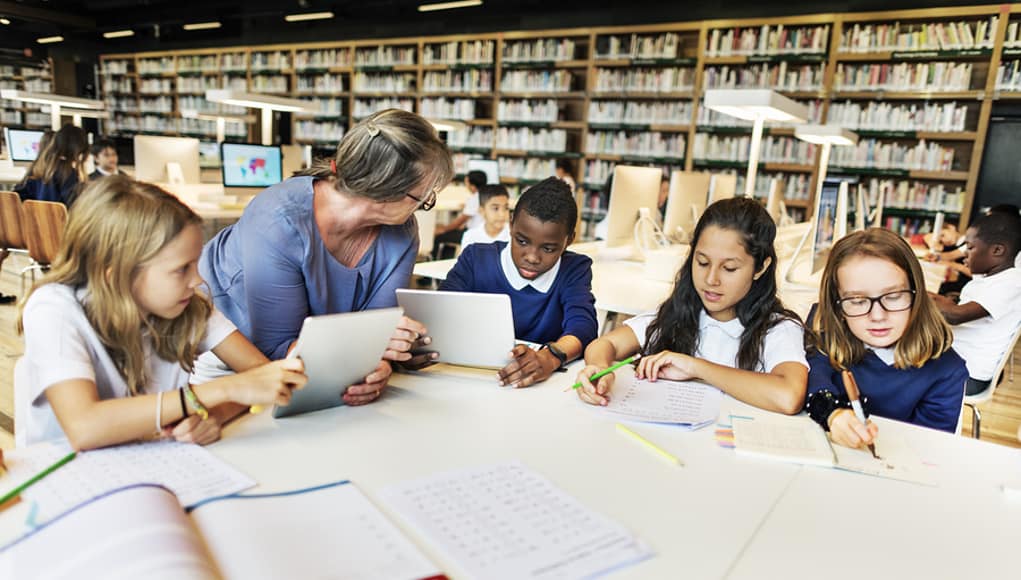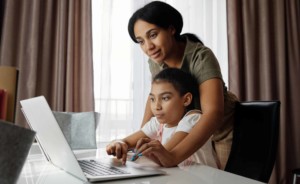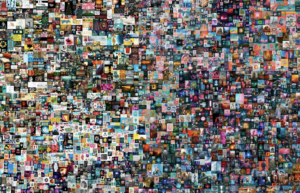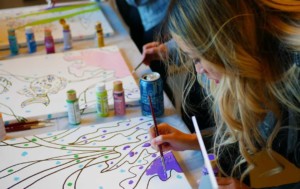Full STEAM Ahead: PBL & the Arts in 2018

By Noah Rue
Have you ever felt frustrated or concerned that you weren’t equipping your students with the technological skills they will need when they finally enter the post-college job market 10 years from now? Try to imagine the world of 2030 — or even 2040. Once students are at the high school level, they should be looking for and finding ways to connect all their subjects of study together.
Here are a few ideas for doing just that.
How to Incorporate the Arts into STEM
STEAM is just a new way of incorporating a broad liberal arts-based approach to education. The false separation of the arts, languages, and humanities from mathematics and sciences is a modern-day separation that artificially divides these subjects from each other. In reality, it is helpful for everyone to have an at least cursory knowledge of subjects that don’t come as easily to them. Not only does a wide breadth of knowledge expand our understanding of the world, but it also helps open more subjects up to more students.
Too often, however, we relegate the fine, creative, and performing arts to drama, creative writing, and art class electives, rather than incorporating them into our instruction of STEM subjects like math, computer science, or physics. A project involving the construction of a replica to scale or an original piece of sculpture may inspire some students to pursue engineering, art, architecture, or welding, in the future. As local and national artists have demonstrated, welding can be utilized for everything from making jewelry to welding car parts to constructing an art car for a local parade or festival.
The colloquial designation of “soft” and “hard” subjects is patronizing to those well-versed in humanities and the arts, and is also quite reflective of the state of our gender equality — or lack of, thereof — in Silicon Valley and beyond. If the tech world is a microcosm of larger structural barriers preventing women from breaking the proverbial glass ceiling, we should stop referring to “soft” and “hard” subjects.
STEMIE has added invention and entrepreneurship to the mix, which is a great and inspiring thing. However, how can we appeal to the more artistic students in our midst to formulate and create apps, gadgets, and other tech-related ideas for the world to see and appreciate? The tech world needs more diversity — not less — because it stands to become more competitive with the addition of added market personas to their future client audiences.
How can more poets get involved with virtual reality? How can more artists and dramatists build resources like New York City’s Freelancers Union (check out their blog). They even have an app designed to help other creative artists and freelancers in need of legal advice. Artist unions help creative individuals establish themselves as independent professionals who deserve to make a living wage, just like those with a more traditional 9-to-5 job — which is, in and of itself, becoming less ubiquitous due to the prevalence of the new gig economy.
Best Practices for PBL
There are no “soft” and “hard” subjects. There are simply different subjects, and all subject matter is, by necessity, connected in the real world. Hence the value of problem-based learning: in “the real world,” we don’t encounter a math problem in a textbook or a perspective assignment in art class.
Instead, as Monica Fuglei argues, we should find authentic problems that exist in the real world. She cites Education World’s recommendation to “[Ask] local business leaders, other groups doing PBL, or key members of the school or local community to suggest tangible real-world problems” such as “investigating and addressing causes of student absences” or “helping a community develop a historic walking tour.” By having students reach out to community members and civic leaders, their learning process ideally becomes more applicable to their everyday lives.
Fuglei also recommends that teachers confront their own lack of knowledge, catch up with current best practices and online forums on PBL, and embrace effective failure, if applicable — which demonstrates to students that, in the real world, actions have consequences and success is never guaranteed.
Since most junior and senior level Language Arts classes devote some time to grant and scholarship applications, it’s important to remind students that there’s a scholarship out there for almost everyone — even young adults interested in pursuing welding at a professional level.
In fact, the search for financial aid to help pay for college could, in and of itself, be an excellent problem-based lesson plan, with time dedicated to finding scholarships for various types of vocations, socio-economic family incomes, cultural backgrounds, and aptitudes. There are numerous scholarships designed for first-generation and low income college applicants, for example.
Real-World Examples of STEAM-Based PBL in Action
For language-based examples of podcasts that students can listen to for inspiration, check out these podcasts that include music education advocacy, conversations with teachers, and TED Radio Hour. Podcasts incorporate audio engineering technology, creative writing, critical thinking skills, and collaboration with peers for the greater purpose of creating an educational audio file for others to listen to and learn from — and if presented as a research project with a written component, a podcast assignment could be an excellent STEAM-based project for secondary students to tackle.
Ann Durfee offers another example of having students work within tight time constraints — typically two hours — to build a vehicle and race them later in the week using various types of races: for example, sometimes it is a speed race, and other times it is a distance race. Durfee explains how the stress of time constraints and limited materials more accurately mimics scenarios students are likely to encounter outside the classroom in their everyday lives — as well as, perhaps, more challenging situations such as being part of a team on the International Space Station or solving a project-based conundrum in the office.
Recently, on National STEAM Day, Madison Edmiston wrote about a few specific activities that could easily be replicated in the classroom. However, too often when curriculum specialists discuss STEAM, they leave out the A for art. What about activities that center around creative writing, fine arts, and humanities? What about projects that encourage students to collaborate with their words, ideas, and entrepreneurial innovations?
The more we are able to encourage tech-free collaboration in the classroom that incorporates technology and AI as one part of the equation, the more we will show students that most of the resources for innovation lie within them. Rather than becoming overly dependent on robotics and computer labs, students can learn from everyone in the room and begin to understand that everyone has the potential to bring something of value to the table.
Future Trends for 2018 & Beyond
The troubling trend currently at play is the slashing of arts electives and components like art, choir, drama, and creative writing. In the Meridian school district, for example, students must pay to attend choir practice, take an art class, or register for a sports team. Why can’t our legislators grant our children the right to a well-rounded education that is equitable for all—rather than merely the privileged few?
The recent threat to NEA funding clearly demonstrates the ongoing hostility toward the arts in this country. However, let us consider Mark Bauerlein’s argument that schools should think like businesses and solicit arts funding and engagement from private donors, creative professionals and entrepreneurs in the community.
If it is truly the case that public education funding seems hell-bent on teaching to the test, as was the woeful tradition instigated by No Child Left Behind more than fifteen years ago, now, perhaps it will be necessary to search outside this model for the extra funding we need. NCLB added more test prep and fewer arts electives and extracurricular classes to schools. Although it may seem anathema to many advocates of public education to seek out private funding, we need to think outside the proverbial box if we’re going to get anywhere in our current polarized system of political gridlock and corporate rule.
Since we’re working within a system grounded in the real world, bureaucratic delays, and agonizingly slow calls to action, we need to think on our feet and show our students that we are willing to fight for their ability to develop all aspects of their imagination and intelligence — regardless of whether the adults around them come to any kind of significant funding solution anytime soon.
For more on arts integration, see:
- Philadelphia is Reimagining Arts & Creativity Education Programming
- Arts Integration for the Future of STEAM Learning
- How to Generate Interest in STEM Fields in Early Elementary Students
Noah Rue teaches ESL internationally, and is a freelance writer focused on his travels and education.
Stay in-the-know with all things EdTech and innovations in learning by signing up to receive the weekly Smart Update.







Patti Shade
And the “ties that bind” are the skills of creativity!